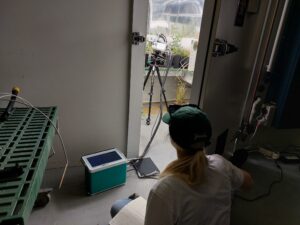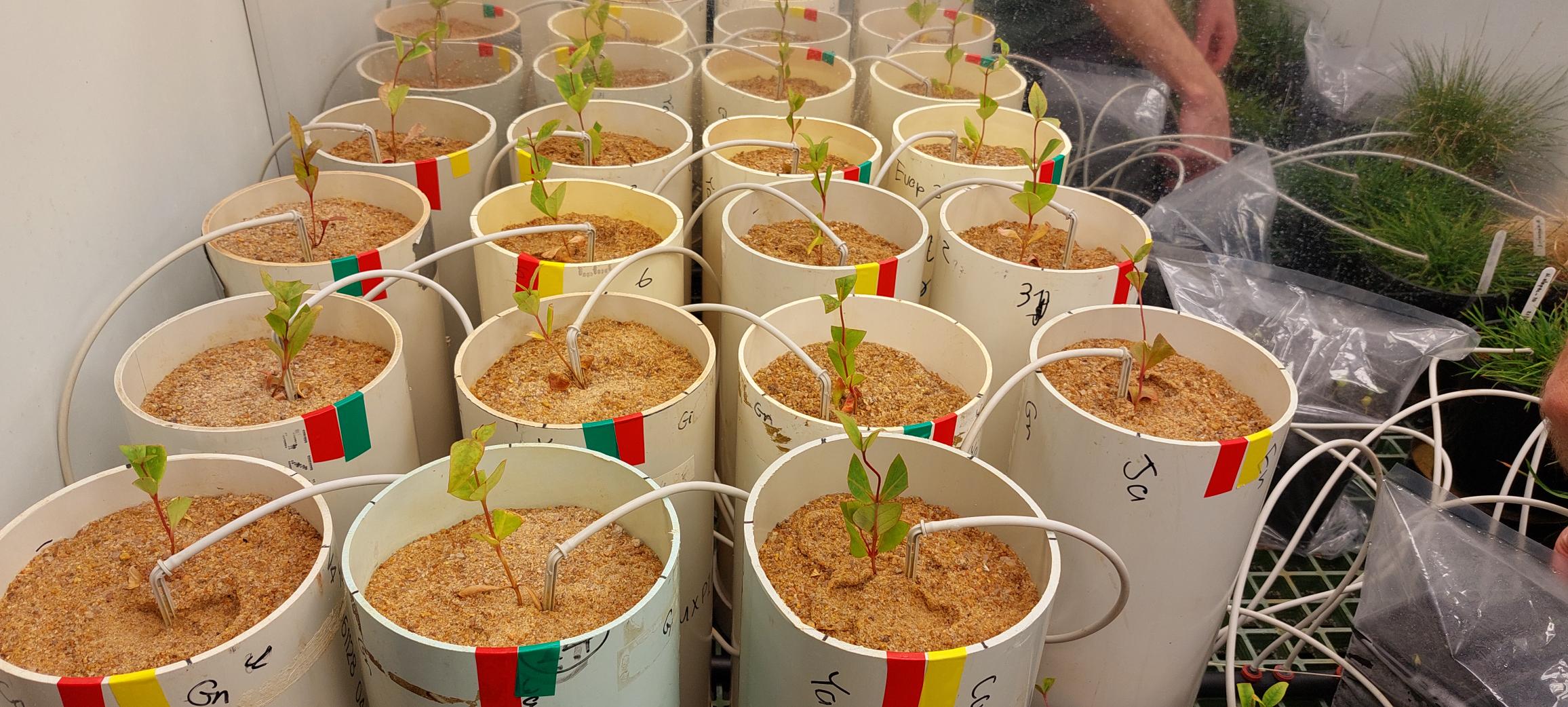In early August, after a long flight from the Netherlands, we touched down in Perth, Western Australia. We were greeted by associate professor Erik Veneklaas and postdoc Paul Drake from The University of Western Australia (UWA). After a couple of days of acclimatization to the new time zone, we started setting up the experiments that we have planned for the next few months.
We came here to the UWA to assist in their planned experimental work on testing eco-evolutionary optimality theory in their climate chambers. We will conduct two experiments alongside each other:
- one studying interacting nutrient x CO2 x water effect on photosynthesis and biomass allocation.
- Acclimation of stomatal opening in relation to the morphological properties of the stomates themselves.
Experiment 1: biomass allocation

The first experiment will be conducted by Jan Lankhorst, and will focus on biomass allocation in response to the above-mentioned environmental differences. The aim is to be able to help in the understanding of plant adaptation in resource use in these changing environments. The link between leaf-level adaptation and whole plant-level adaptation is a key feature in the eco-evolutionary optimality theory; an area we would like to really investigate. Using two distinct levels of nutrients, with two different watering regimes in two different CO2 levels will generate a lot of data on this.
The aim is to use at least three functionally different plants, to get a broader scale in adaptation strategies. Now we have just one species of deciduous tree growing, the Eucalyptus marginata, but they will soon be joined by rye grass, Lolium perenne. The final species we would like to use is pines, since they are evergreen and might provide different insights.
Experiment 2: stomatal conductance

The second experiment will be conducted by Astrid Odé and will be focused on the stomatal properties, linking operational stomatal conductance to morphologically maximal stomatal conductance. This focus comes from previous research on this ratio in plants, which has not been explored in detail yet but raises some remarkably interesting questions. Multiple species of commonly grown crops will be used in the two CO2 chambers to assess the differences between those treatments. It will also contain some grass species and C4 species, to get a broad response view. For now, the species used are buckwheat, common wheat, soybean, borlotti bean, and maize, and as much as possible will be added within the available time of our visit. This experiment will contribute to our understanding of stomatal functioning and both acclimation and adaptation to changing environments.
Jan and Astrid are both LEMONTREE PhD students based at Utrecht University. They will be at UWA until mid-November carrying out these experiments. We look forward to sharing their results.

